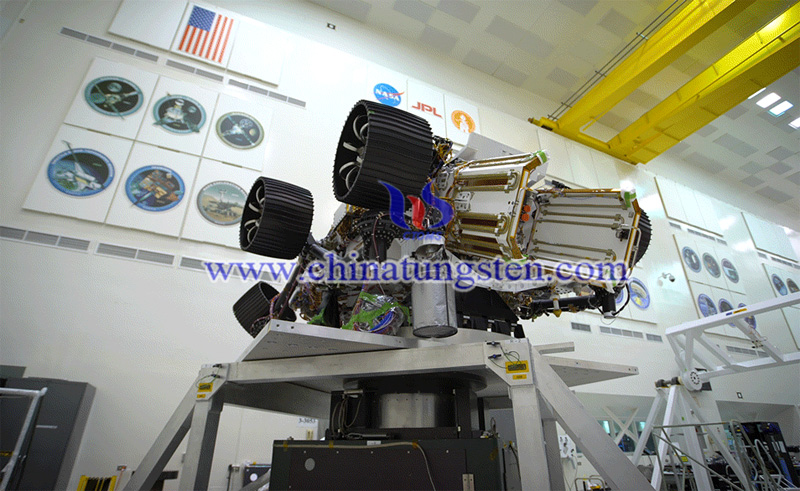Via Tungsten Weights to Get Center of Gravity, NASA's Mars 2020 Comes Full Circle
- Details
- Category: Tungsten's News
- Published on Tuesday, 17 September 2019 06:22
Though tungsten weights to get center of gravity, NASA's Mars 2020 rover comes full circle. According to foreign media reports, the NASA's Martian vehicle has been assembled recently. The 1040 kilograms probe is looking for the center of gravity on what is called a spin table in the cleanroom of the Spacecraft Assembly Facility at Jet Propulsion Laboratory (JPL) in Pasadena, California. This is the assembled rover's first spin table test, a key part of ensuring the safe journey to Mars scheduled for 2020.

Establishing the rover's center of gravity is a key part of the assembly process and helps ensure that the spacecraft travels smoothly from launch to entry, descent, and landing on Mars as calculated. Engineers can add weights to help balance out the vehicle. Finally. Engineer affixed nine tungsten weights totaling 20 kilograms to the rover chassis at predetermined attachment points to get the center of gravity just right.
Lemil Cordero, a Mars 2020 mass properties engineer at the JPL, said: "We rotate the rover back and forth and look for asymmetries in its mass distribution. Then, similar to your gas station putting small weights on the tire's rim to bring it into balance, we'll put small tungsten balance masses on the rover in specific locations to get its center of gravity exactly where we want it."

The Martian vehicle was rotated clockwise and counterclockwise at about 1 revolution per minute on a spin table. This is the first time that the assembled detector has determined its center of gravity for the spin table test. The second and final spin table test will be conducted at a NASA facility at Cape Canaveral in Florida next spring, according to JPL.
JPL engineer is building and managing the operation. the Mars 2020 rover will launch on a United Launch Alliance Atlas V rocket from Space Launch Complex 41 at Cape Canaveral on July 2020.
NASA's Mars 2020 rover though tungsten weights to get center of gravity is about to be completed which means Mars exploration is one step closer. When the rover lands at Jezero Crater on Mars on Feb. 18, 2021, it will be the first spacecraft in the history of planetary exploration with the ability to accurately reposition its point of a touchdown during the landing sequence.
- Tungsten Manufacturer & Supplier, Chinatungsten Online: www.chinatungsten.com
- Tungsten News & Prices of China Tungsten Industry Association: www.ctia.com.cn
- Molybdenum News & Price: news.molybdenum.com.cn
- Tel.: 86 592 5129696; Fax: 86 592 5129797; Email: sales@chinatungsten.com



 sales@chinatungsten.com
sales@chinatungsten.com